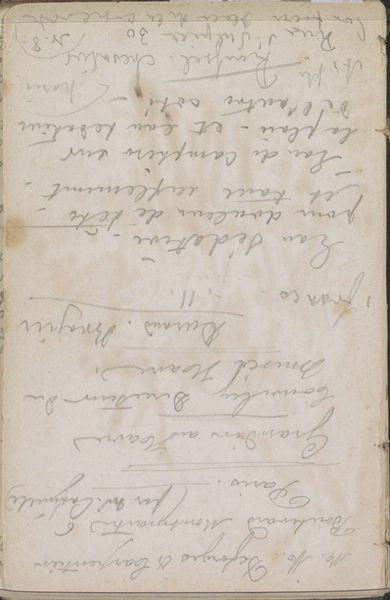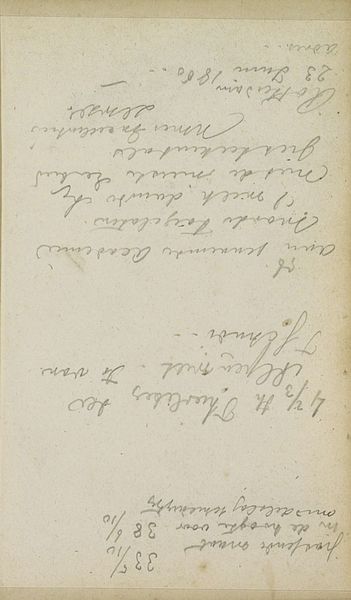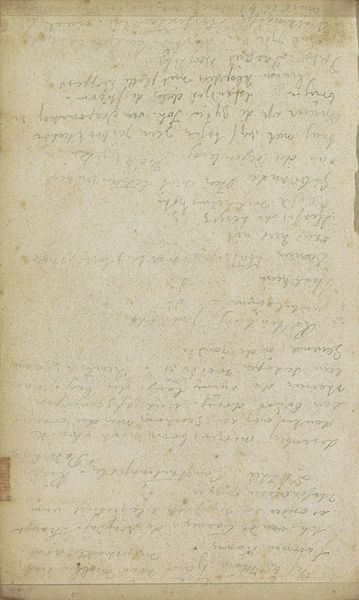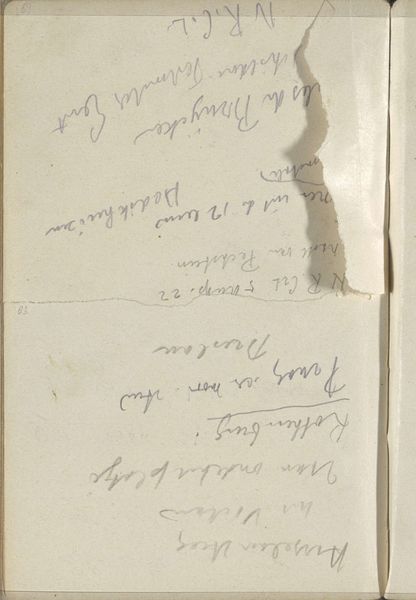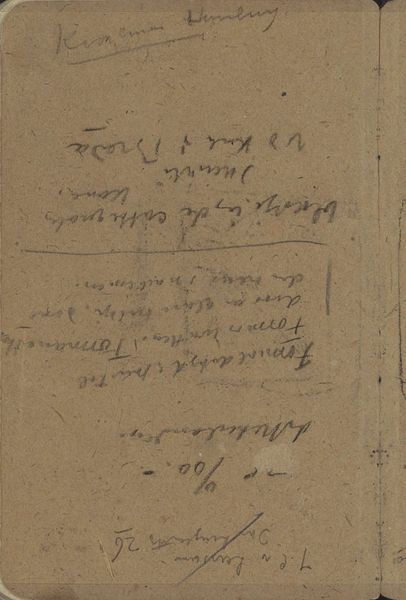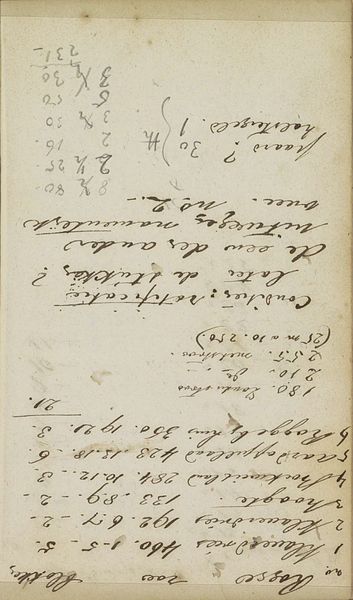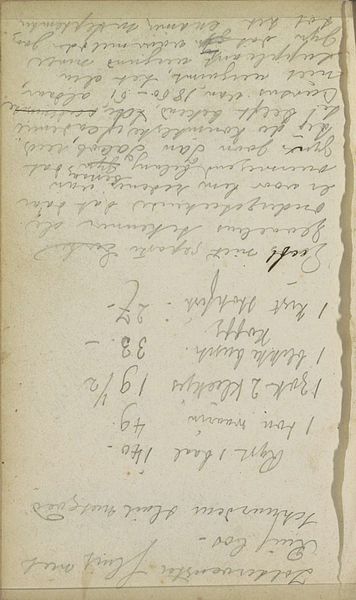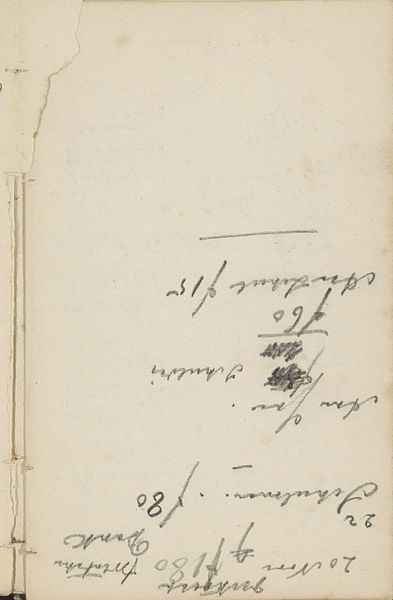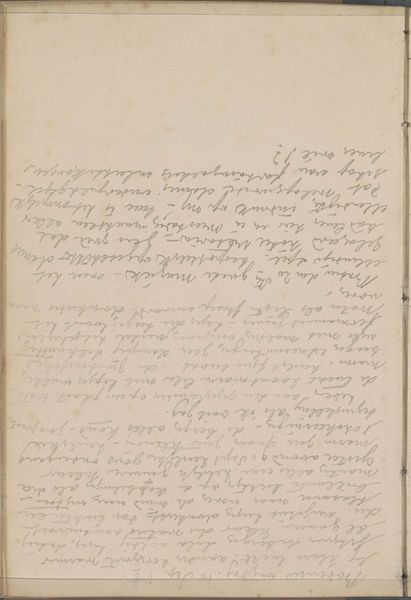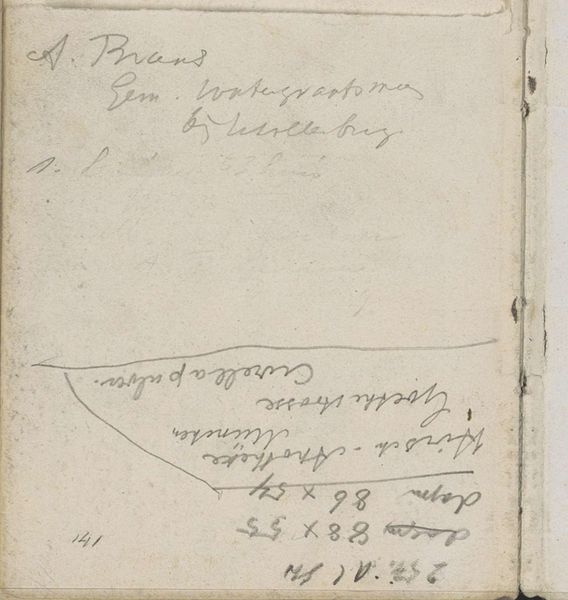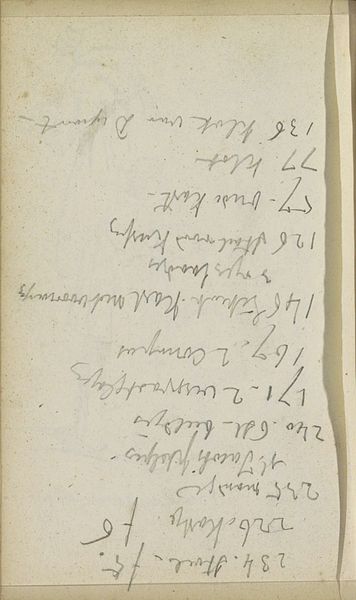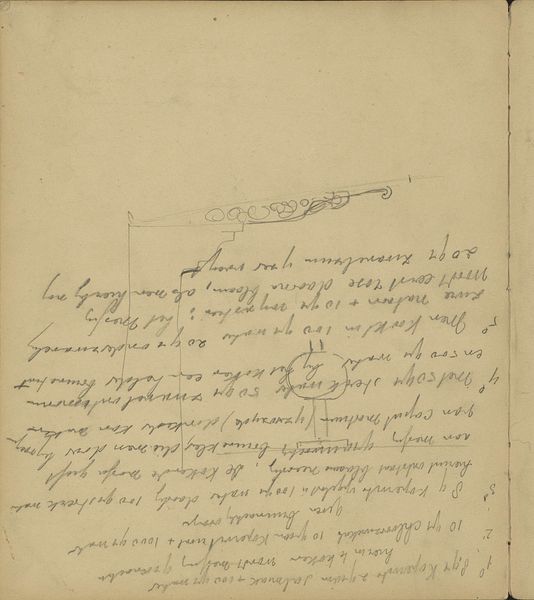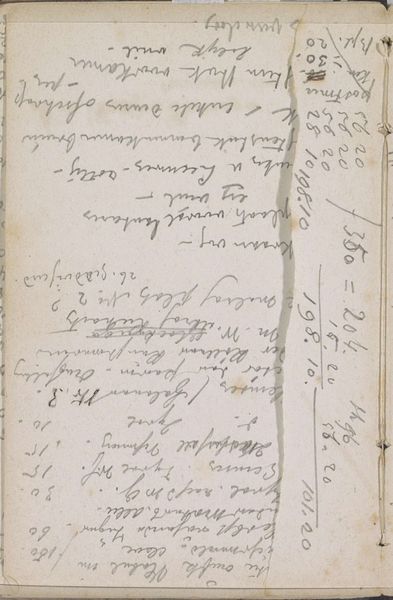
Copyright: Rijks Museum: Open Domain
Curator: Looking at "Notities," created by Johannes Tavenraat between 1854 and 1868 and held here at the Rijksmuseum, I'm immediately struck by the sense of intimacy it evokes. It’s such a direct glimpse into an artist’s thought process. Editor: My first impression is a kind of nostalgic quietude, the faded ink hinting at the passage of time. It feels almost like uncovering a secret. What exactly are we looking at here? Curator: This drawing on paper is essentially a page from an artist's notebook, filled with Tavenraat's observations and reflections. The notes themselves could be related to various projects, names, locations, or perhaps financial records - it's challenging to say definitively. We see names of people and places that, back in their time, definitely must have stirred emotions. Editor: It is amazing how you said that these records have stirred emotion: names have deep psychological undercurrents, holding layered memories and associations of particular people and places that, because they cannot be easily recalled, only emphasize our human condition. Do you think it's reasonable to describe this as an element of Romanticism in its aesthetic appeal, considering it seems more utilitarian rather than formally artistic? Curator: It's definitely more document than polished work of art, and I can see what you mean about its practical intention versus Romanticism. The romantic element perhaps lies less in the explicit intention of Tavenraat, and more in our perception. Romanticism valued personal expression, it valued emotion and intuition, it certainly embraced the fragment. Tavenraat's random notations let us imagine the moment the image was rendered, its potential purposes, and its inherent symbolism related to daily activities that become more evocative and, to a degree, poetic with the passing of time. Editor: In this sense, an object gains complexity. This also influences how a contemporary public interacts with this artwork, as part of what has come to be defined as the canon of Dutch Golden Age Art in museum collections. The museum space can indeed act as a bridge to see the value of the symbol through new forms of appreciation that expand collective knowledge and public perception. Curator: I think you’ve articulated it wonderfully. There's a quiet strength in objects that once might have been disregarded but offer the gift of resonance when we embrace a deeper analysis and understanding. Editor: Precisely, a dialogue between time, intention, and enduring cultural memory.
Comments
No comments
Be the first to comment and join the conversation on the ultimate creative platform.
